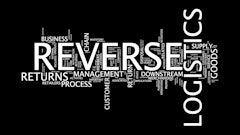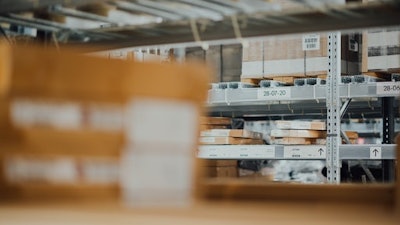
Warehouse managers are well aware of the challenges associated with packing. One of the challenges, with significant business impact, is to choose the ideal box type for an order consisting of multiple items of varying sizes and weights, while minimizing the amount of air transported or stored. This, in the warehousing and logistics industry, is the bin packing problem.
While many warehouses still operate using the traditional principles, such as manual picking and packing, 3D bin packing solutions can significantly complement and improve warehouse processes and have a major business impact.
With the continuous increase in cardboard and transportation costs, the implementation of artificial intelligence (AI)-powered 3D packing solutions has become more relevant, topical and logical for warehouse processes.
Here’s how 3D bin packing software can optimize warehousing processes by combining it with warehouse management systems and API.
Benefits of 3D bin packing solutions
One of the ways in which 3D bin packing software optimizes warehouse processes is in outbound delivery splitting, where an order must be split into multiple containers (boxes, pallets, trucks, shipping containers) due to the size of the order and available loading meters or difference in shipping points, routes, delivery priority or delivery dates. 3D bin packing solutions come into play to find the optimal container size of the goods as well as consider all the previously mentioned variables.
When the solution is applied, the system reduces the delivery quantity in the original delivery and splits the delivery distribution into new deliveries. While this process is sometimes addressed through manual means, the need for an AI-powered solution can be more beneficial and cost saving for all parties included.
A second warehouse process improvement by 3D bin packing software is box assortment and increased fill-rate optimization in boxes, on pallets, in shipping containers or in trucks, taking into account the truck load building principles (weight limits and axle weight limits).
By manually attempting to choose the correct size box and arranging the boxes into a container, a human miscalculation could lead to paying for an extra shipment of a box or even a pallet. While this doesn’t sound too big of a loss, these numbers add up, making businesses pay for avoidable errors.
A 3D bin packing solution helps avoid paying for an extra container or a partial shipment due to the limited number of loading meters. Having the items arranged as close as possible to each other will minimize the number of required containers, thus minimizing the required number of pallets and increase the capacity for limited loading meters.
3D bin packing can also bring improvements to warehouse capacity planning, where the software can help with forecasting the amount of space needed in a warehouse for certain items or orders, or forecasting the transportation capacity x days in advance, thus minimizing the number of vehicles used, avoiding expensive, last-minute truck bookings, finding the right vehicle types (by size and their weight capacities) in time and reducing the transportation costs.
Managing truck load building just in time is also a capacity planning related matter, where last minute order priority can change and suppliers must change the delivery plan, thus changing the truck capacity plan.
Another benefit of AI-powered 3D packing solutions is assistance during loading operations with planning algorithms. With 3D packing software, you can plan delivery routes while determining which trucks to fill and how since the software can provide 3D visualizations to ensure the optimal fill-rate while taking into account the loading sequence -- the first order loaded in the truck or should be the last one off the truck.
This means that you can be confident that you're always getting the most efficient routes with the minimum amount of operational overhead. This solution can also be implemented with 3D load planning visualizations, where you are able to see how the truck load looks in real time as well as the type of cargo you have loaded.
However, an important factor to fully utilize these 3D bin packing solutions is to have quality master data for inventory dimensions (length, width, height) and weight. Master data management can help maintain data consistency in the warehouse, so you can easily access and efficiently analyze data about inventory within seconds. Luckily master data levels are drastically improving thanks to advanced automated dimensioning systems.
Conclusions
While many AI-powered solutions might sound like the future, they are not. AI-powered 3D packing solutions and many others are the present and a necessity in today’s warehousing and logistic industry. Due to the increasing transportation, carton costs and the sustainability goals which must be met.
Adopting these solutions will grant benefits such as saved time, money and overall increased warehouse operation efficiency. If you’re a business looking to expand or optimize ways of operations, implementing an AI-powered 3D packing solutions can show how significant of a business impact they can bring.



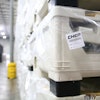

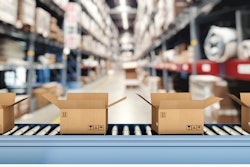





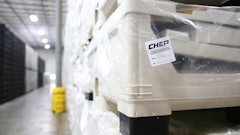




![Pros To Know 2026 [color]](https://img.sdcexec.com/mindful/acbm/workspaces/default/uploads/2025/08/prostoknow-2026-color.mduFvhpgMk.png?ar=16%3A9&auto=format%2Ccompress&bg=fff&fill-color=fff&fit=fill&h=135&q=70&w=240)


